 |
 |
 |
| |
IMPAACT P1066: Raltegravir (RAL) safety and efficacy in HIV infected (+) youth 2 to 18 years of age through week 48
|
| |
| |
Reported by Jules Levin
IAC Wash DC USA 2012 July 22-27
S. Nachman1, E. Acosta2, N. Zheng3, H. Teppler4, B. Homony4, X. Xu4,
C. Alvero3, E. Handelsman5, C. Worrell6, B. Graham7, M. Toye8,
E. Petzold9, A. Wiznia10, and the P1066 Group
1SUNY Stony Brook, Pediatrics, Stony Brook, United States;
2University of Alabama at Birmingham, Birmingham, United States;
3Harvard School of Public Health, Boston, United States;
4Merck, North Wales, United States;
5Division of AIDS, NIAID, NIH, Bethesda, United States;
6Natl Inst of Child Hlth and Human Devt, Bethesda, United States;
7Frontier Science Inc, Buffalo, United States;
8Baystate Medical Center, Springfield, United States;
9Social and Scientific Systems, Durham, United States;
10Jacobi Medical Center, Albert Einstein College of Medicine, Bronx, United States


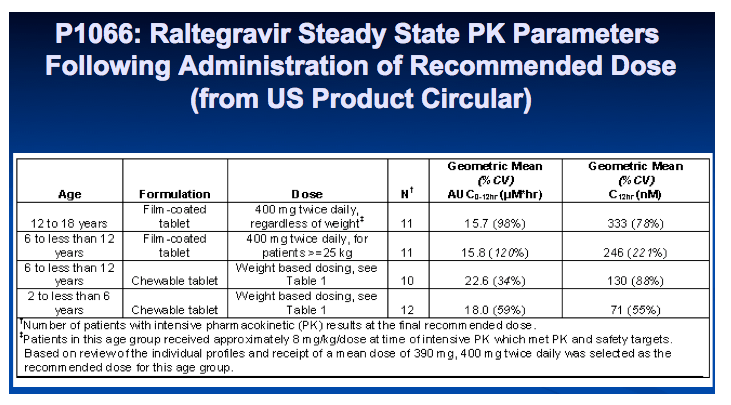
ABSTRACT
Background: New antiretrovirals are needed for HIV+ children. IMPAACT P1066 is a Phase I/II
open label multicenter trial to evaluate pharmacokinetics (PK), safety, tolerability, and efficacy of multiple RAL formulations in treatment experienced HIV+ youth. RAL was given with an optimized background regimen. Dose selection was based upon intensive PK and safety data: 400 mg BID of RAL film-coated tablet (6-18 years) and weight-based dosing (~6mg/kg BID) of RAL chewable tablet
(2 to < 12 years). Here we present safety and efficacy results at 24 and 48 weeks in the 96 subjects who received the selected RAL dose.
Methods: Subjects were stratified sequentially in 3 age cohorts (I, 12-18 years; II, 6-< 12 years; III,
2-< 6 years); Cohort I enrolled first. Safety data through Week 48 was assessed. Grade 3+ or serious adverse events (AE) were summarized. Primary virologic endpoint was vRNA < 400c/mL or ≥1 log reduction. Secondary endpoints were vRNA < 50c/mL, and change in CD4 count (%). Efficacy
analyses used Observed Failure missing data approach.
Results: Baseline characteristics, virologic and immunologic responses at weeks 24 and 48 for 96 subjects are in tables. Overall, virologic response was observed in 78.9%, RNA < 50c/mL in 56.7%, with mean CD4 increase 155.7 cells/uL. Through Week 48, there were 15 subjects with Grade 3+ clinical AEs (1 subject with drug related [DR] psychomotor hyperactivity, abnormal behavior and insomnia); 16 subjects with Grade 3+ laboratory AEs (1 with DR AST and ALT); 15 subjects with serious clinical AEs (1 with DR rash); 2 subjects with serious laboratory AEs (1 with DR
transaminase increased); no discontinuations due to AEs and no deaths.
Conclusions: Two RAL formulations were studied in HIV infected youth ages 2 to 18 years.
At the selected doses, both formulations were well-tolerated and showed favorable virologic
and immunologic responses.
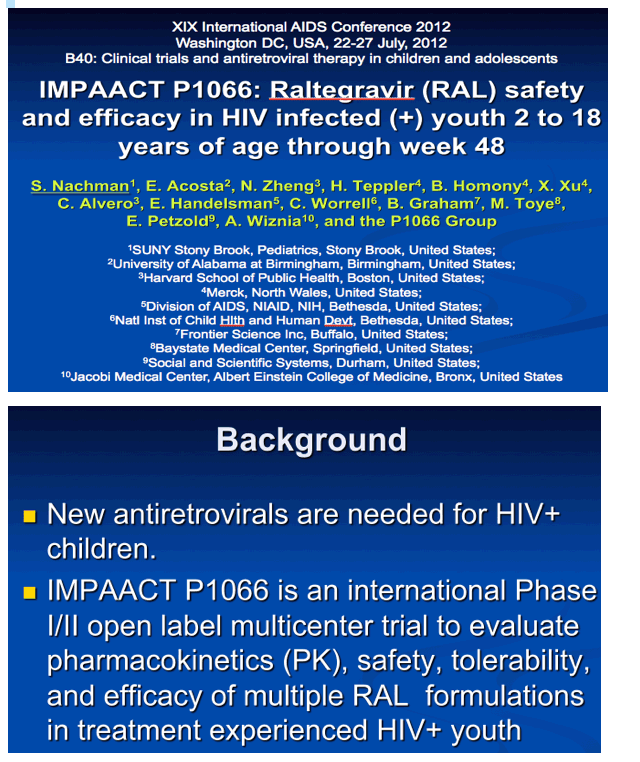
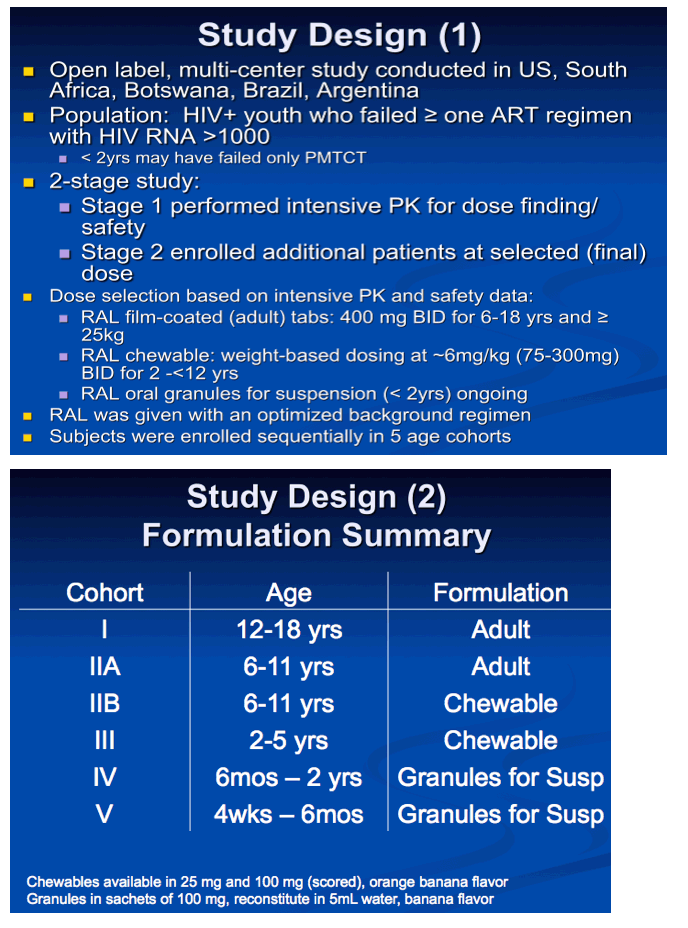
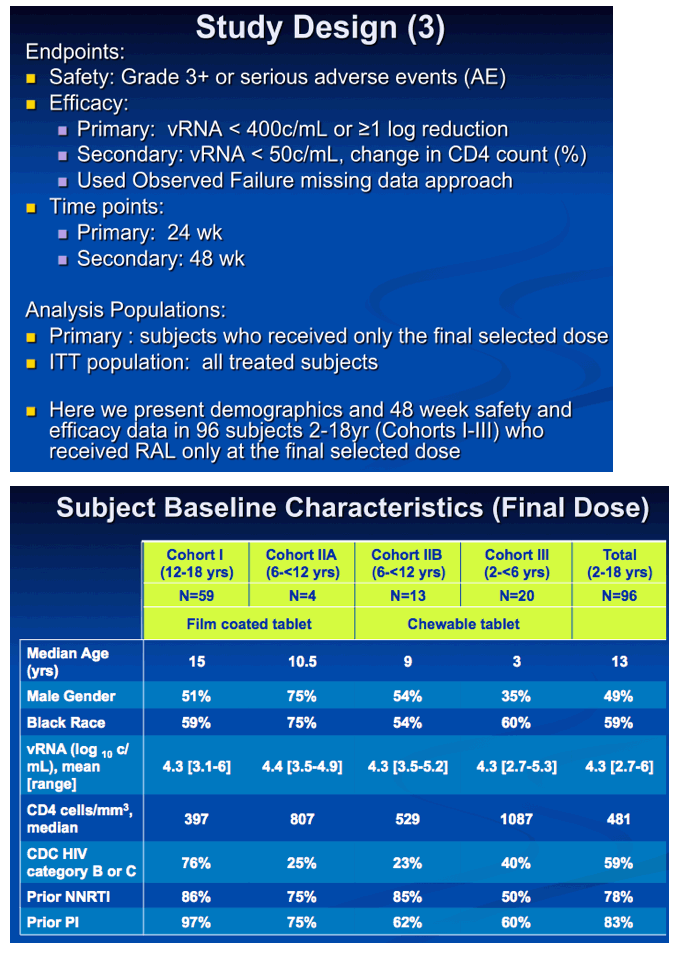
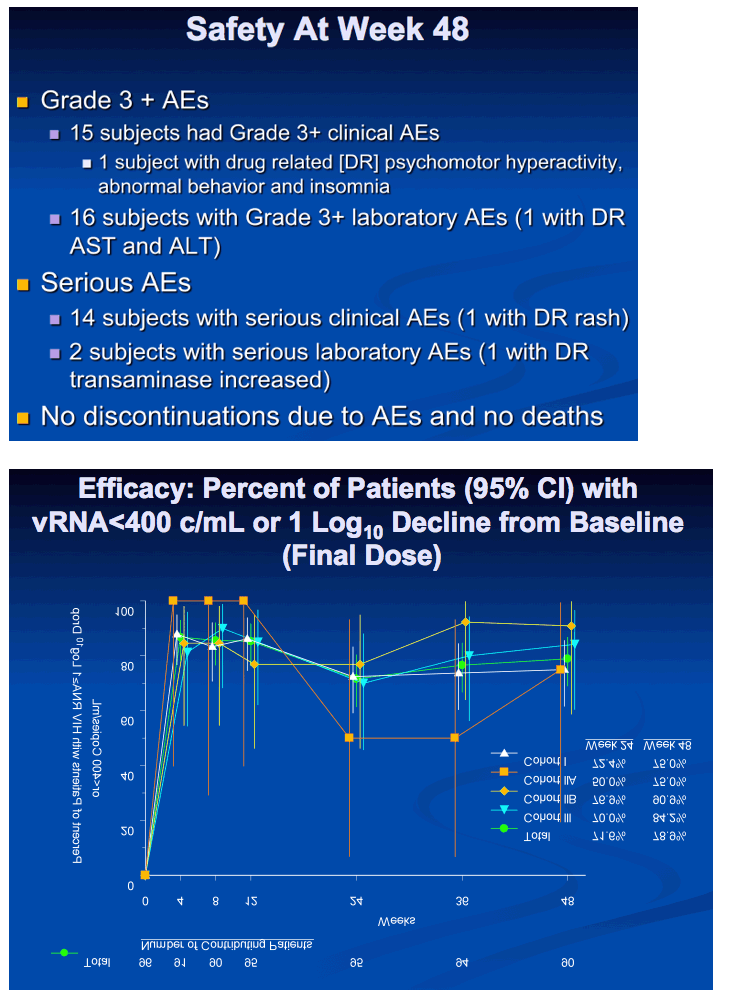
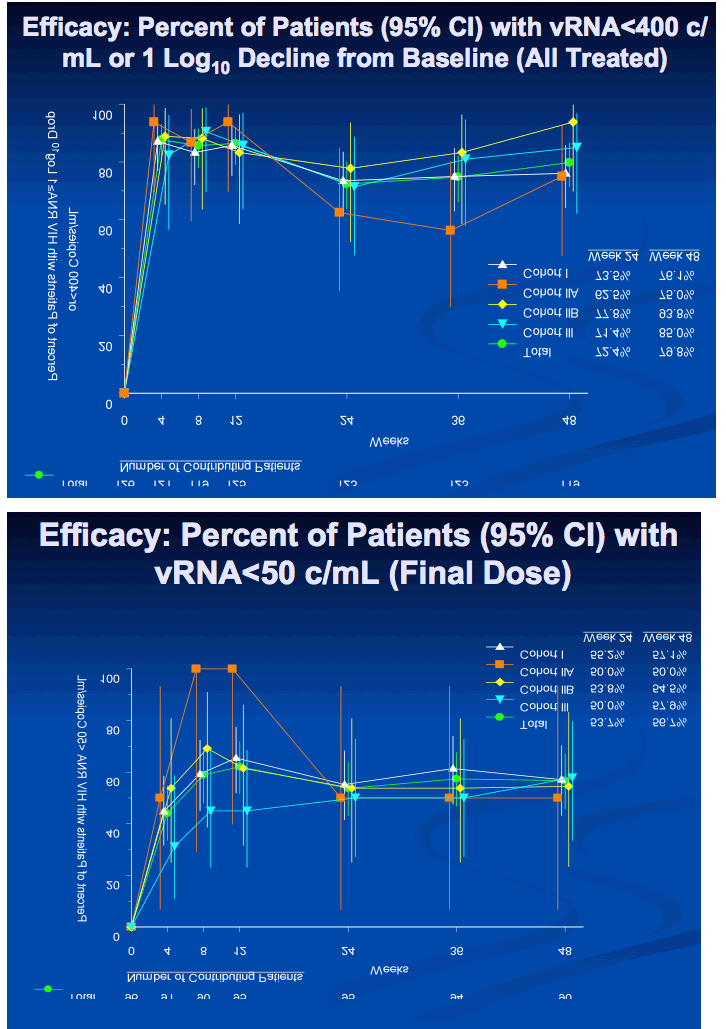
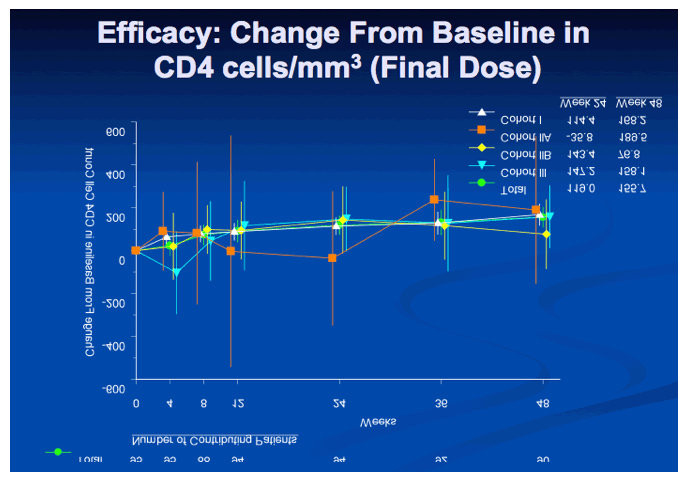
|
| |
|
 |
 |
|
|